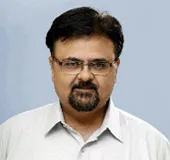
As the world fights the Coronavirus pandemic that is threatening to derail both the global economy as well as globalisation, for India, the effort is also a measure of its preparedness to handle large-scale humanitarian crisis stemming from natural or man-made disasters of such scale and magnitude.
Though one of the first major disasters struck Mumbai in the form of the serial bomb blasts on 12 March 1993, governments at both the Centre and state levels started to focus on disaster management as a policy only after the January 2001 Gujarat earthquake. Since then, India – and particularly Mumbai – have experienced similar large-scale disasters. The lessons learnt from those experiences would be critical in the country’s fight against the coronavirus over the next few days and weeks.
India’s response to disasters
Nation-wide disaster management protocols were established in India four years after the devastating Bhuj earthquake of 26 January 2001. These protocols, set up under the under the National Disaster Management Authority (NDMA), delineated the state response during calamities. Standard procedures for a health emergency would start at the point of outbreak, be tackled from health perspective by the states and finally be seen through a national lens.
Following the Bhuj earthquake, the idea of being prepared locally for disaster management was well engrained. Local hospitals made reaction strategies, stocked all emergency and casualty wards with supplies. This planning was particularly helpful when public hospitals in Mumbai had to handle the 2006 serial train bomb blasts’ victims. The casualty duty staff reported to work within minutes of the tragedy. The injured were triaged, checked and operated upon, if needed. The effort was carried out with mechanical efficiency. The Lancet recorded that the quality of care given to the victims was comparable to that of the Royal London Hospital of the victims of the London subway bomb blasts.
On 26 July 2005, a “one-in-100 years” cloudburst devastated Mumbai. Flash floods swept away people, property and animals. In the four months that followed, the public health system worked round-the-clock. Fever OPD was set up at the KEM Hospital, the largest municipal medical facility in the city. Investigation facilities were set up for malaria, dengue, and typhoid cases giving test results within a few hours. To prevent an epidemic, medical camps were held all over the city with doctors, nurses, interns, giving away free medicines for “presumptive treatment”. The coordinated effort – despite the severe challenges – ensured that the increase in leptospirosis cases in Mumbai was much less in comparison to a similar situation in Rio de Janeiro, Brazil.
From local to global threats
The response to the Bhuj earthquake, given the nature of the disaster, was largely a localised effort within the worst-affected areas of Gujarat. In subsequent calamities – both man-made and natural, too, the response was localised. The experience of handling repeated incidents under standard protocols for staggered response, has prepared several cities and states to handle localised events. However, one must remember that disasters, as well as measures to respond to them, have collateral consequences. For example, lack of coordination between various ministries and government agencies, put Maharashtra’s poultry industry in deep crisis following the mass culling of birds to contain the bird flu epidemic of 2006.
During disasters, information needs to be collected from hospitals and health providers in real time, quickly collated and utilised for prompt rollout of public health measures. In the string of disasters from 2001 to 2006, the set up mainly aimed at caring for the victims/patients. It was only in 2004, that the Integrated Disease Surveillance Programme (ISDP) was initiated under the Union Ministry of Health and Family Welfare to quickly detect and respond to outbreaks. Under ISDP, surveillance units have been set up in all states and union territories. These state units are connected with the Central Surveillance Unit integrated with the National Centre for Disease Control, New Delhi. These units collect data on a weekly basis from primary and community health centres, government and private sector hospitals and medical colleges. ISDP’s rapid response teams are alerted and put into action whenever a rising trend is noticed.
The viral diagnostic laboratories, multidisciplinary research units and model rural health units set up by jointly by the Department of Health Research and Indian Council of Medical Research (ICMR), AIIMS institutes and state governments, have also provided diagnostic laboratory facilities all over the country. The National Institute of Virology, Pune, has provided training, support and confirmatory tests.
The government has also approved the recruitment of trained professionals under National Health Mission, aiming to appoint one epidemiologist each at state/district headquarters, one microbiologist and entomologist each at the state headquarters. The post of a Veterinary Consultant at state surveillance unit has also been approved recognising the ‘One Health’ initiative. Despite these measures to tackle localised outbreaks as well as those with a global footprint, their success will largely depend on how regularly all the stakeholders have rehearsed these protocols by conducting regular drills.
Against the backdrop of these national efforts, therefore, Kerala’s victory over the Nipah virus outbreak in 2018 provides some valuable lessons to the rest of the states in their efforts to mitigate the ongoing threat posed by the coronavirus.
Combatting coronavirus
For the ongoing COVID-19 measures, India’s response includes cancellation of visas of visitors from all high-risk countries, screening of incoming passengers from foreign locations and placing them under surveillance, tracking contacts of those found infected, community surveillance, preparation of isolation wards, home quarantining and setting up of quarantine facilities and issuing timely health advisories.
To increase the testing facilities, the ICMR, over the next week, is establishing 72 functional labs and also 49 others through the Department of Biotechnology, Defence Research and Development Organisation, Council for Scientific and Industrial Research and government medical colleges across the country. It is also in the process of approving 51 NABL-accredited private laboratories for COVID-19 testing.
Maharashtra, as several other states, has adopted a tactical approach to prevent the virus from spreading. Containment of the disease in densely populated areas of the Mumbai Metropolitan Region has been accorded primary attention. Even as the news of the first few confirmed cases was trickling in from various parts of the state, the government ordered the closure of all malls and multiplexes and announced precautionary holidays in schools and colleges. The Mumbai police banned all group tours of the city. On 16 March, all non-essential service providing offices were directed to function at 50 percent staff strength, and all public and private sector companies were ordered to announce ‘work from home’ till further notification.
The government has also started stamping the left hand of all persons suspected of infection with indelible ink used for elections for their easy identification if they break home quarantine. Evasion of compulsory quarantine and non-observance of home quarantine have also been made punishable offences. The municipal commissioner has also urged the police chief to take action under section 54 of the Disaster Management Act, 2005, against any person spreading rumours on social media platforms. Going beyond the efforts to enforce ‘social distancing’, the state has increased testing facilities at eight new places, while the Municipal Corporation of Greater Mumbai has directed nine major private hospitals and the railway hospital in the city to prepare isolation wards with a total of 90 beds. In Mumbai, this is expected to soon increase the testing capacity to around 1,500-plus daily, from the 200 tests that the municipal Kasturba Hospital is equipped to handle.
While laboratories across the globe are racing against time to develop a vaccine and the phase 1 clinical trial has also begun in Seattle, United States, the world is still 12 to 18 months away from its mass production. Given the rapid increase in the number of COVID-19 cases, the lessons learnt from past experiences would be critical in how the country is able to contain its spread and save lives. In high density cities such as Mumbai, the first and foremost challenge is to confine the disease in small clusters, while steadily increasing testing facilities city-wide. The best efforts of the government will fail if the people do not observe self-discipline strict adherence to government advisories and regulations.
Dr. Nilima A Kshirsagar is National Chair of Clinical Pharmacology, ICMR, New Delhi and former Dean of KEM Hospital, Mumbai.
The views expressed above belong to the author(s). ORF research and analyses now available on Telegram! Click here to access our curated content — blogs, longforms and interviews.




 PREV
PREV


